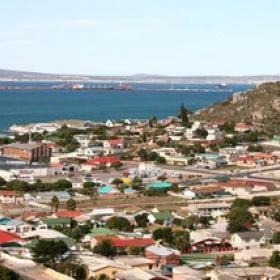| Jump to: Project team · Partners |

Funded by the British High Commission and coordinated by Reos and the ACDI, this project aimed to bring together stakeholders from a spectrum of social, economic, environmental and political backgrounds that are involved in economic development in the Saldanha Bay (SB) area for a scenario building process. The view was to facilitate a process of knowledge-sharing and collaboration between the stakeholders in order to begin to develop an integrated, common vision for sustainable economic development in the area. The project was envisioned as the first stage in the development of this integrated vision: its results will be used to develop a funding proposal for taking forwards the process of developing scenarios for the sustainable economic development of the SB area.
The SB area is acknowledged as a potentially important resource for the sustainable growth and development of the West Coast region (situated along the western coastline of South Africa, a couple of hours drive north of Cape Town), with its natural deep-water port and neighbouring industrial areas. The area currently has high unemployment levels (estimated at a minimum of 18%), high poverty levels and a low skills base. There is hence a desire to create job-driven economic growth. Since 2007, attention has turned to the possibility of establishing an Industrial Development Zone (IDZ) in Saldanha Bay as a mechanism to boost economic development in the region, and more recently, to the possibility of establishing a Special Economic Zone (SEZ; a tool that will replace the IDZ designation in South Africa). The IDZ/SEZ will likely be focused on developing on oil and gas hub, servicing the oil and gas industries, as well as on maritime ship-building and repairs.
Saldanha Bay has a sensitive yet rich landscape/seascape: it has four RAMSAR sites (wetlands of international importance), a large proportion of Critical Biodiversity Areas, as well as a number of private, local, provincial and national conservation areas. The local economy currently relies strongly on primary activities such as agriculture, forestry and fishing, as well as on a vibrant tourism sector. The establishment of an IDZ/SEZ and its potential environmental consequences (e.g., air and water pollution) would likely heavily impact these economic sectors as well as the integrity of the natural environment. In addition, the SB area is recognised as a strongly water scarce area, and the demand generated by an IDZ/SEZ would aggravate this situation. These competing tensions create an urgent need to develop an integrated vision and strategy for “green” economic development in the SB area.
The background interviews conducted for the project revealed a range of competing worldviews among stakeholders, with regards to economic development of the SB area. At the same time, there were a number of key common themes emerging from the analysis of the interviews (e.g., most respondents identified water and electricity as key resource constraints for the area; most respondents were concerned about in-migration of people to the area and its possible consequences). The project's workshop resulted in the identification, among stakeholders, of a number of priority issues for the economic development of the SB area: these were considered to be the assimilative capacity of the environment, the availability of water, the availability of electricity, and the availability of skilled labour.
Project team

|
|
|
Partners and funders

